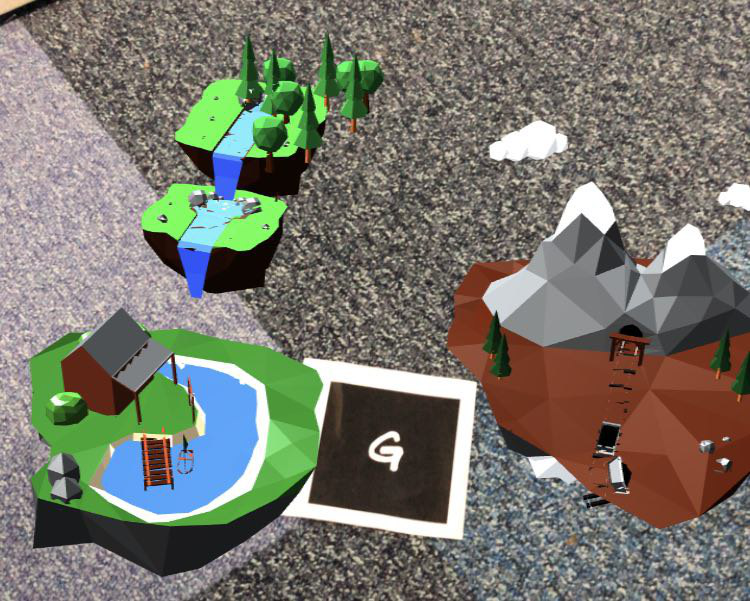Augmented Reality

The impact of a single human being on the environment is hard to grasp. This is partly due to the long term effects of their current lifestyle, and also to layers of convenience, such as flights and supermarkets, hiding the (potential) direct impact. This project tries to strip away these layers by presenting the user with a representation of their impact, depending on their current lifestyle, with the aid of augmented reality.
This project relies on the usage of a so called marker: 
For that to work the user navigates to the hosting website via a QR code, and is then confronted with a questionair to determine the environmental impact. Following that, the devices camera should be pointed towards the marker, and the animation of an environment resembling the impact starts. Of course the user is able to share their impact via twitter and facebook. Note here, that no distinct app is needed, because the software runs natively in any modern mobile browser.
On a greater perspective, this project could be used in Greenpeace’s sustainability campaigns; to be more precise, the QR code mentioned earlier could be printed on a banner or a sign for people to directly interact with it, and the marker needed for the augmented reality could be on the same banner or sign or even sprayed on the ground.
The innovative aspect of the whole idea is the connection of augmented reality driven by the need for a more sustainable future: creating or increasing the awareness of our personal impact on the pollution of the earth and sea by utilizing augmented reality and mobile devices everybody owns and thus making it available to everybody.
The main components behind this project are AR.js and three.js, by providing the functionality to animate and render 3D models. The models were created in blender, a free and open-source 3D computer graphics software toolset.
Find the code on our github repository.